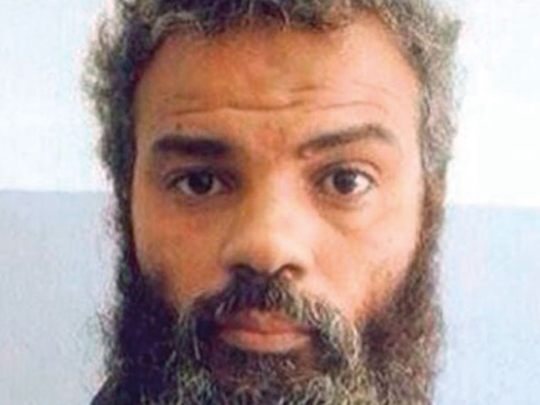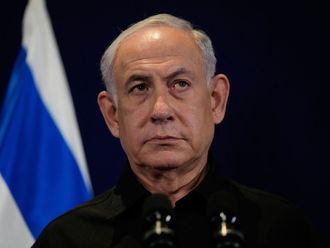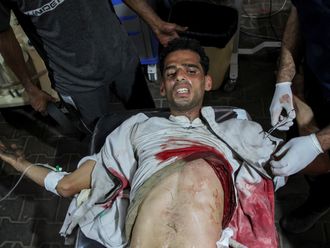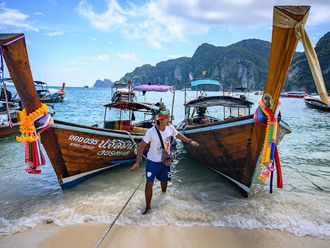
Washington: After armed men stormed the US diplomatic mission and assaulted a CIA base in Benghazi, Libya, in 2012, the US turned to a Libyan to help gather information about Ahmad Abu Khattala, a prime suspect in the deadly attacks.
The soft-spoken informant befriended Khattala and began visiting his house in Benghazi. He gave Khattala money, a vehicle and computers, pleasing Khattala, who eventually began confiding in the man.
The 40-year-old informant testified matter-of-factly for hours in federal court in Washington on Monday and Tuesday under the pseudonym of Ali Majrisi. He implicated Khattala in the attacks that killed four Americans, including Ambassador J. Christopher Stevens, and spoke of his initial reservations about working with the US, which eventually paid him a $7 million reward for his work.
“There was lot of dangers in that thing. It was really a hard decision to make,” he said, explaining that he wanted to help his home city of Benghazi.
The informant’s testimony, given through an interpreter, marked the beginning of the sixth week of the trial of Khattala, 46, who is accused of helping orchestrate the September 11, 2012, attacks in Benghazi. The diplomatic mission was overrun and set on fire, and militants launched a devastating mortar barrage on the CIA base. If convicted, Khattala faces life in prison.
Already, a jury has heard dramatic accounts from CIA officers in disguises and other Americans who survived the attacks. Two other Libyans also provided damaging details about Khattala as prosecutors tried to paint a damning picture of his activities before and after the attacks.
In his lengthy testimony, Majrisi talked about how the Americans paid him $5,000 a month to spy on Khattala and arrange his capture at a cottage about 20 miles from Benghazi. Once Khattala was in US custody, Majrisi received the hefty reward, paid in two instalments, and was relocated to Texas. He received other compensation from the FBI, too, paying for his family’s expenses.
Khattala’s defence lawyer, Michelle Peterson, suggested Majrisi’s testimony was financially motivated.
“It’s hard to keep track of all the money the US government was paying you, wasn’t it?” she said. He said it was hard to remember because the events he recounted moved rapidly.
Peterson’s cross-examination seemed to frustrate the informant at times on Tuesday.
Majrisi provided a pivotal piece of the prosecution’s case: He linked the Benghazi attackers to Khattala.
As prosecutors played surveillance footage of the attack on the diplomatic compound, Majrisi identified a number of men and said three were very close to Khattala. The informant said the men helped carry out killings on Khattala’s behalf.
The informant said Khattala himself could also be seen on surveillance video minutes after the attack began and later at the door of the diplomatic mission, holding an AK-47 assault rifle.
Peterson asked the informant whether he had special training when it came to recognising faces on grainy video. He responded he had a “very strong memory”.
Later, Khattala began sharing incriminating information as the informant gained his trust. He even once showed the informant documents and computers, suggesting the materials had been taken from the diplomatic mission and that he knew the names of Libyans who had visited the US ambassador.
On another occasion, Khattala showed Majrisi a mortar and shells he kept in his garage.
Khattala told the informant he was expert in the use of mortars and bragged about his ability to hit targets even under the most difficult circumstances. A mortar was used to attack the CIA base after the diplomatic compound had been overrun, its fire killing two CIA contractors and wounding two other Americans.
Khattala also spoke of his plans in the attacks, making reference to a US rescue force that had been delayed at the Benghazi airport after arriving from Tripoli.
“I intended then to kill everyone there — even those who were at the airport,” Majrisi recalled Khattala saying.
During his testimony, the informant said Khattala told him the Americans were using a facility to spy on people in Benghazi, a possible reference to the base the CIA had been using.
Khattala suspected the US government was seeking to arrest him, according to the informant. He testified that Khattala told a group of militants at a mosque in Benghazi that he was wanted by the Americans.
Majrisi said that after the capture of an Al Qaida suspect in October 2013 in Tripoli, Khattala became paranoid, rarely leaving his house. When he did, he travelled with a group of men for safety reasons. He often changed his phone number and the vehicles in which he travelled.
The informant suggested killing Khattala himself, “so I can be at rest finally and my city would be at rest, because this person is a murderer.”
But that did not happen. Finally, the Americans designed an operation to capture Khattala.
“It was a comprehensive plan,” Majrisi said.
The informant said that the Americans bought a house on the coast, a place where Khattala would feel safe from rival forces headed by a former CIA asset. One night Majrisi drove Khattala to the cottage, where members of the Army’s Delta Force and an FBI agent with the Hostage Rescue Team were waiting. The Americans detained Khattala while Majrisi went back to his car. He slept for hours.
He later drove to Tripoli and met with US officials who gave him money. He then made his way to Tunisia and eventually, with the help of the FBI, moved to US with his family.











